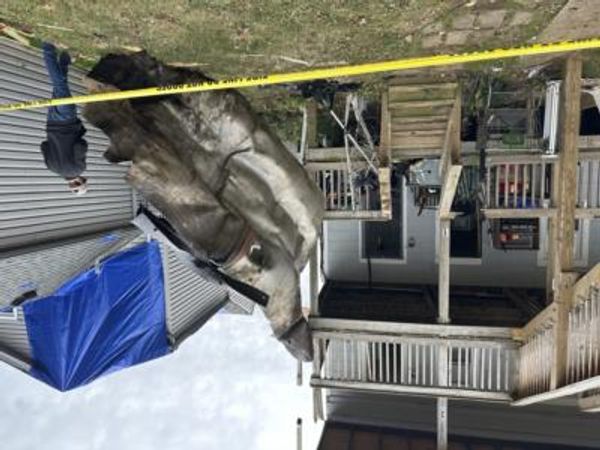No indicator can perfectly predict what the stock market will do in the future. That's why we tend to interpret daily action as opposed to coming up with price targets for the market. But studying a lot of market cycles gives you a strong understanding of what normal price action looks like. When the S&P 500 didn't act as expected after its strong move on Wednesday, the expectation breaker was a strong reason to reverse our position.
Recognizing A Potential Trend Change In The S&P 500
The S&P 500 started its latest rally in early May. We often use the SPDR S&P 500 exchange traded fund to represent its action. You can't invest in an index so we favor SPY as an investable instrument. Except for a brief touch of its 21-day line at the end of May (1), the S&P 500 trended above its 21-day steadily through July (2).
After such a powerful rally, a pullback is normal and expected. The question, which we don't know the answer to, is how deep and how long? When the S&P 500 broke below its 21-day line (3), that doesn't necessarily end the uptrend but it should put you on alert.
Jason Shapiro talks about having patience and discipline to wait for the right setup.
As the S&P 500 rallied back above the 21-day line (4), it was promising. But just a couple days later a more serious gap down put the index and SPY below their 50-day moving average lines (5).
At its low on July 25, SPY was down a little less than 5% from its high (6). That wiped away six weeks of progress in just seven days. It's often said that markets go up stairs on the rally and take the elevator in the pullback. The Nasdaq composite was even worse, dropping nearly 9% from its top by July 25.
Follow-Through Days Should Follow Up
As the S&P 500 rallied from the July 25 low, the low held. Even when tested a few days later (7). The Nasdaq composite, by contrast, undercut its July 25 low.
Given the amount of distribution days, one could look for follow-through day action to suggest the trend was turning back up. On Wednesday, even before the Fed meeting and subsequent news conference by Fed Chairman Jerome Powell, indexes were up sharply across the board.
The S&P 500 and SPY ended the day with a 1.6% gain with volume picking up from Tuesday on both the New York and Nasdaq stock exchanges (8). Because we lightened up ahead of the Fed meeting, the follow-through action led us to add the ProShares Ultra S&P 500 ETF on SwingTrader. It adds leverage to double the move of SPY.
It would have been normal for a potential pause after the strong day. What wasn't normal was the relentless selling the next day (9). If a rally isn't strong enough to hold the gains of a follow-through day, the failure rate skyrockets. As noted in our Market School program, an undercut of the low on the follow-through day tends to lead to undercuts of the rally low and rally failures.
That's exactly what happened on Friday. Granted, we didn't have an expectation that it would be so dramatic. But when a follow-through day low is undercut on the S&P 500, it sets up a new expectation of weakness. Exiting our position quickly helped us avoid the greater destruction that followed.
More details on past trades are accessible to subscribers and trialists to SwingTrader. Free trials are available. Follow Nielsen on X, formerly known as Twitter, at @IBD_JNielsen.







